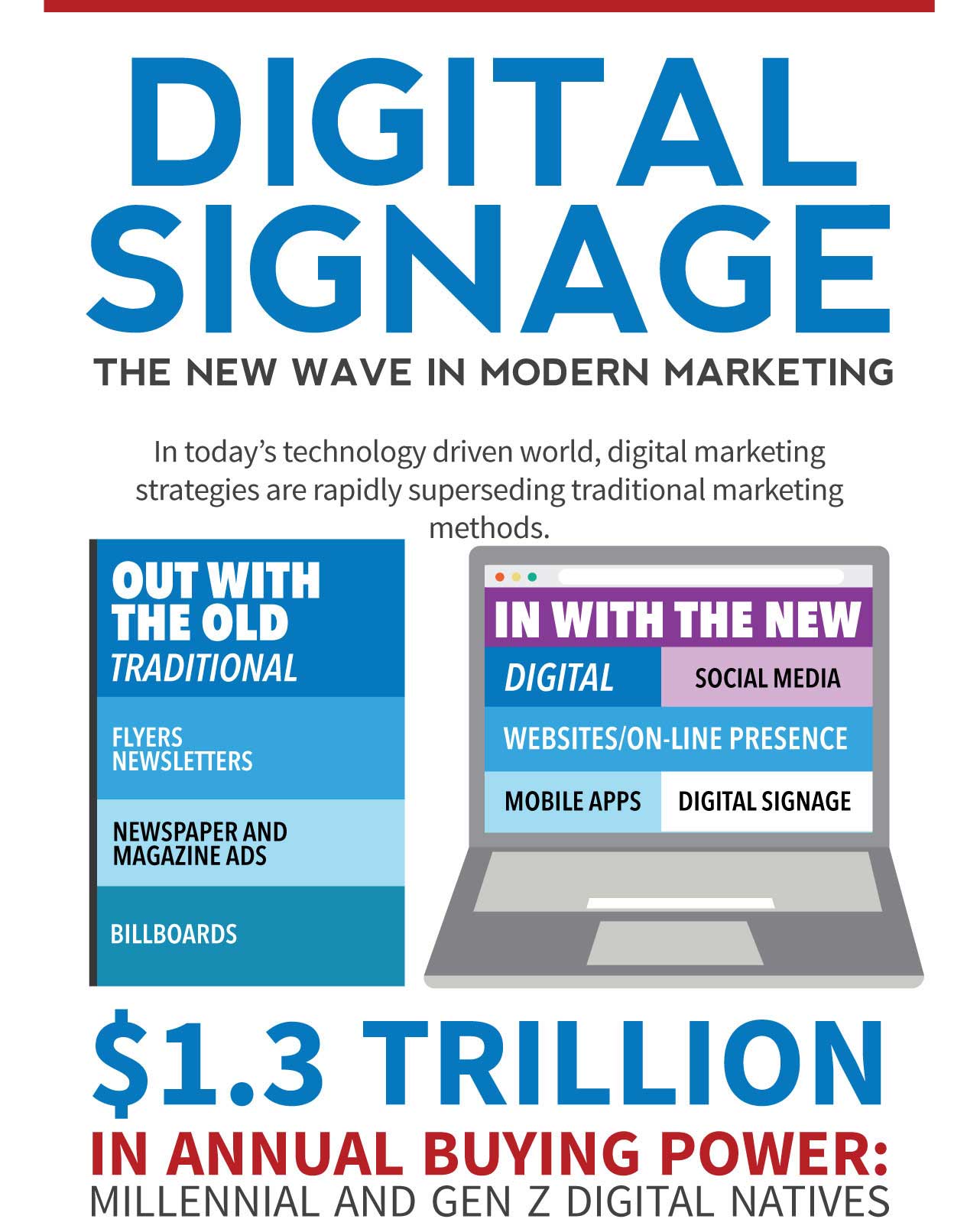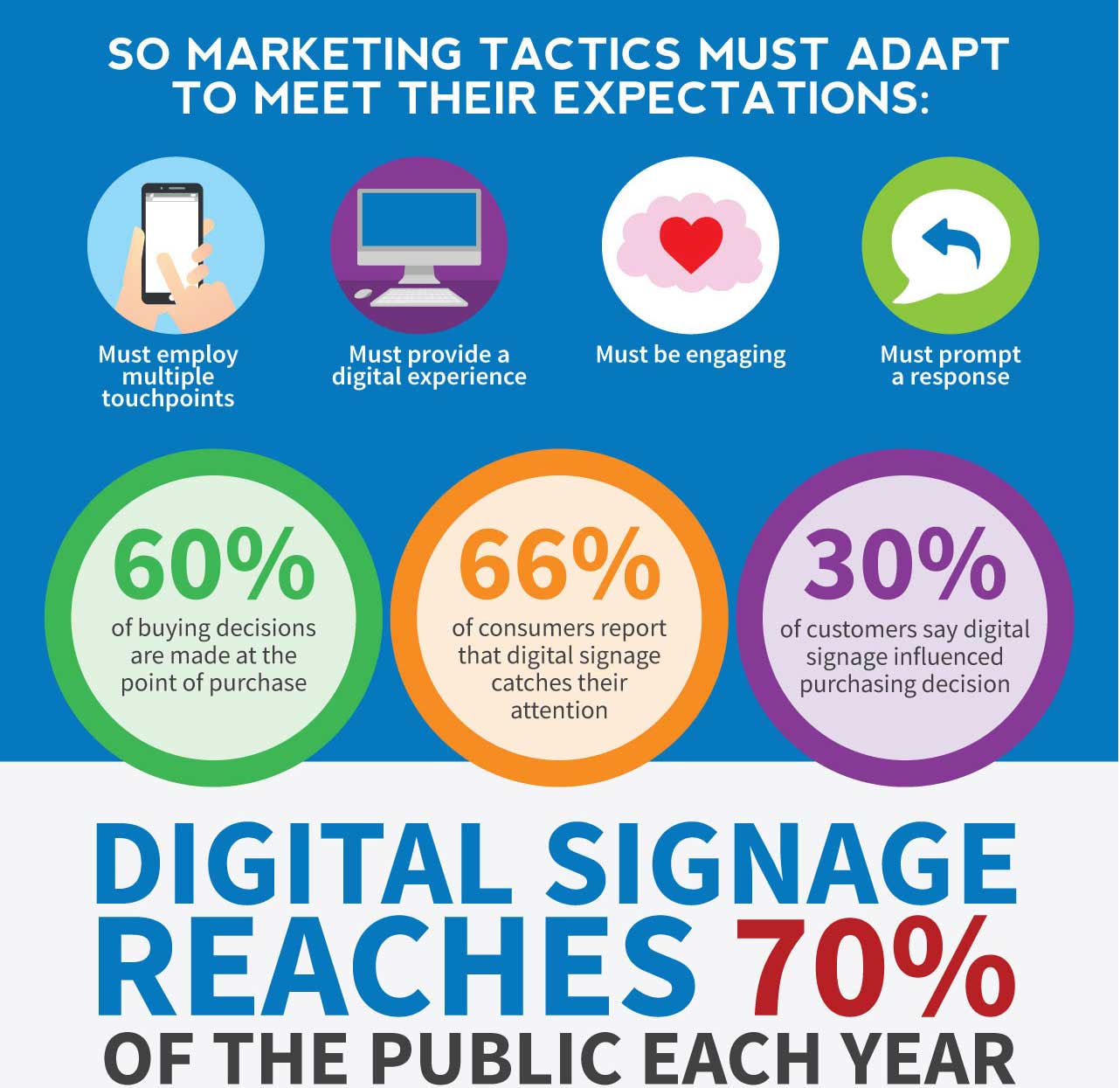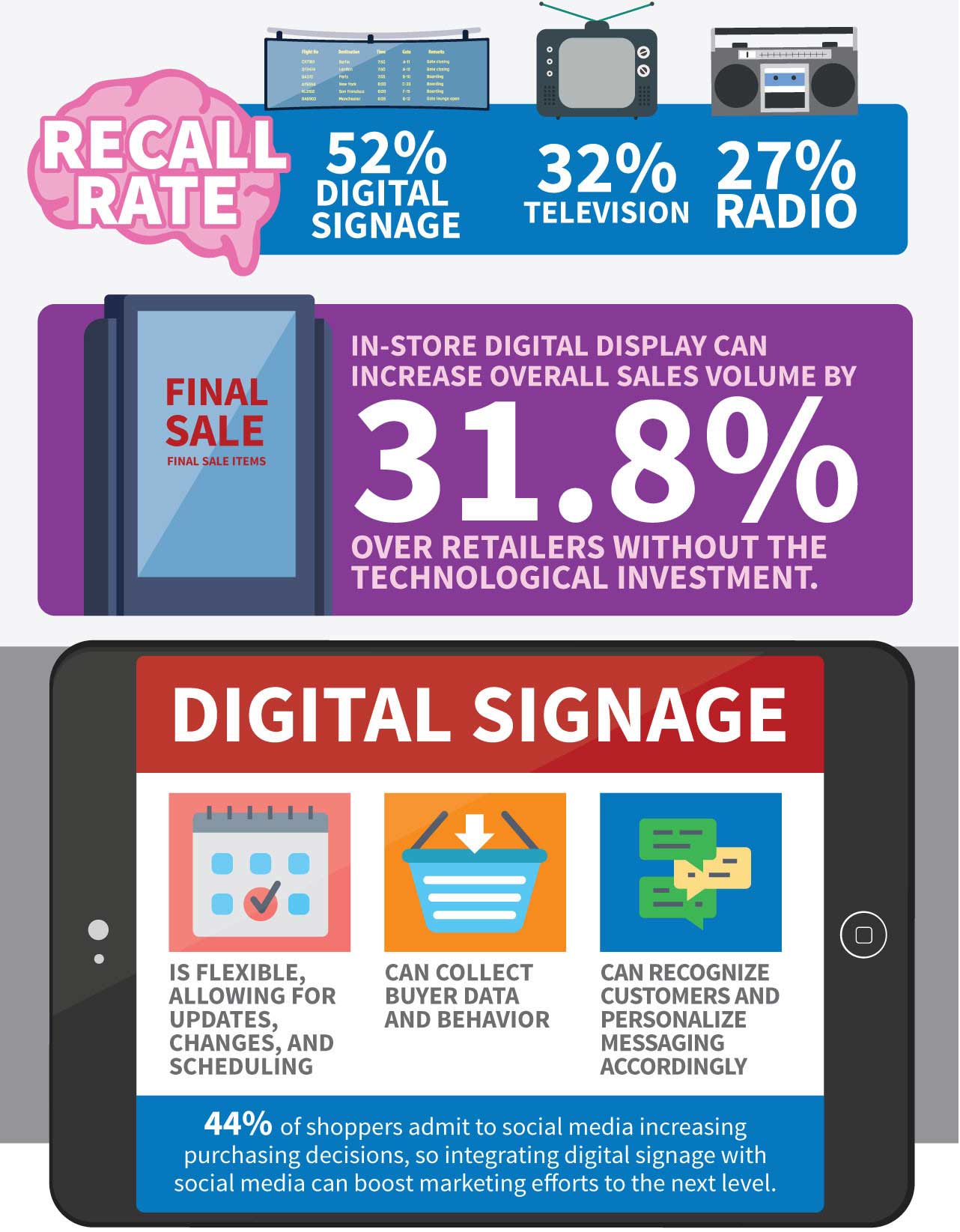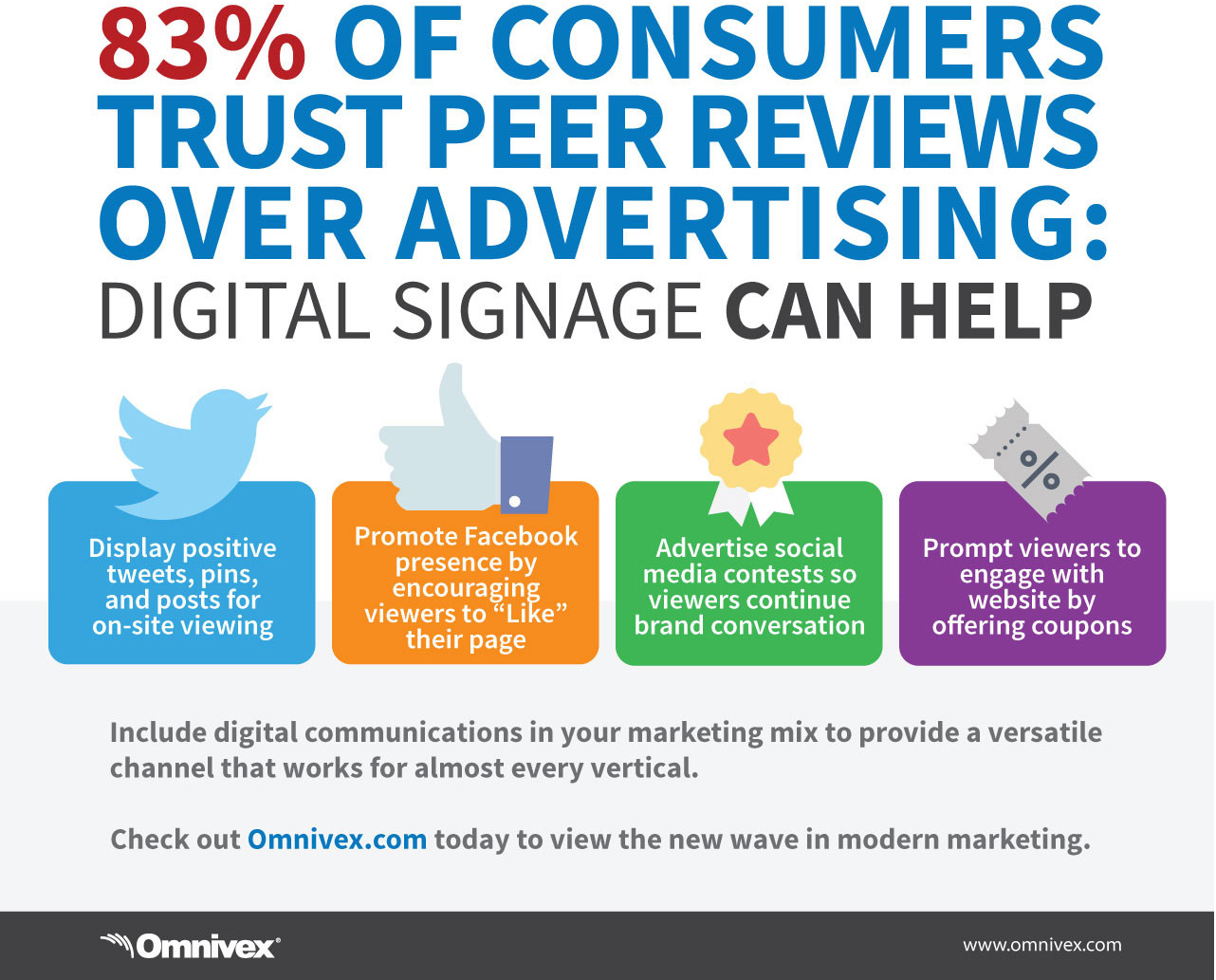4 COMPELLING WAYS DIGITAL COMMUNICATIONS ENABLE BETTER MARKETING
Much time is spent determining marketing strategies (or a marketing strategy), planning your messages, and creating content. However, developing amazing content is only the first step in delivering it. Distribution of that content is the next step in its journey. Over the last few decades, distribution has become increasingly focused on digital, as traditional marketing mediums shrink. Digital communications channels include your website and online presence, social media, mobile apps, and digital signage. You can control the content in each of these areas, which gives you the ability to develop an integrated, cohesive plan, with all aspects of each marketing campaign supporting one another.
Campaigns can run online via social media, and in physical locations with digital signage and mobile apps. You’ll find using digital signage to promote your marketing is worthwhile. Digital media used in public venues reaches more customers than videos on the internet or Facebook, according to an Arbitron place-based study.[1]
When determining how to use digital signage, you’ll need a strategy that complements all your other digital channels. Consider these four ways to use digital communications to enable better marketing.
MEET YOUR DIGITAL AUDIENCE’S EXPECTATIONS
Digital natives like millennials and members of Gen Z are now a significant part of the economy. Many millennials, now in their 30s, are in the prime spending part of their lives and have annual buying power of $1.3 trillion, according to research from Boston Consulting Group.[2] With this in mind, meeting your audience’s digital communications expectations means engaging them at multiple touchpoints. Using digital displays as a channel allows you to do this. Younger generations expect to be immersed in a digital experience, so your content needs to be engaging and prompt a response.
For retailers, storefront digital displays could tempt a shopper to come inside. Entertainment venues can make use of digital communications to bolster marketing messages, with promos about upcoming events. Airports and train stations can provide real-time scheduling information and important travel updates. There are also opportunities for interactivity, with digital communications in a number of venues that promote marketing messages while appealing to a digitally native audience.
By adding digital communications to your marketing mix, you extend your reach with a dynamic medium. It’s an in-person message that resonates and a great channel to add to your marketing toolkit.
INTEGRATE DIGITAL SIGNAGE AND SOCIAL MEDIA
Leveraging your social media presence with digital signage helps you display social proof. Many consumers trust the reviews of peers over just about anything else. According to a Nielsen survey, 83% of consumers trust peer recommendations over advertising.[3] So, take advantage of positive social media engagement.
No matter what industry, there are many possibilities for integrating social media and digital signage. You can feature tweets, pins or posts about your brand, displaying everything for the in-person audience to see. For the other side of this strategy, promote a social media contest or prompt for those viewing your screens so they continue the conversation with your brand on social media. This can raise your social media engagement significantly. Ultimately, the interconnection of messaging delivers a better marketing mix.
RESPOND TO THE ENVIRONMENT
Flexible platforms allow for easy changes and updates as well as scheduling. This means you can control what plays when. You can track it all to see if adjustments need to be made. Also, there’s real-time access to make changes. You always have a blank canvas. So, your displays can change in an instant with little effort. For example, if you use digital communications in hospitality to greet and inform your guests, you can tailor the content based on the guest viewing it, time of day or season. You can promote day excursions at check-in time to interest new visitors. During check-out time, show videos about how to leave a review, traffic or weather.
EXPLOIT BIG DATA
Digital communications within an IoT environment can be a data mine, which is key to improving marketing. There are two ways digital signage data can impact your marketing. It can collect data about buyer/user behavior, and it can also recognize customers and personalize the message. An example of data your system might collect would be understanding where in-store visitors’ eyes focus, using sensors. Digital displays could also start playing product-specific content when they sense someone is looking at a particular product. This data could help your merchandising team. Additionally, interactive kiosks can track which areas are most touched by users and provide great insight on popular information.
Your screens can also identify viewers based on a variety of triggers, like beacons that detect when someone enters a location. It can then deliver more personalized messaging, welcoming and reminding the viewer of relevant information.
Personalized and data-driven digital communications have a high-impact ROI. According to Digital Signage Today, 66% of consumers report that digital signage catches their attention, and 42% of consumers want to shop at retailers with video displays.[4]
INCLUDE DIGITAL COMMUNICATIONS IN YOUR MARKETING MIX
Choosing a marketing mix has become a complex decision, as there are many channels to consider. As you hone in on the perfect approach for your brand, be sure to add digital communications to the mix. It’s a versatile channel that works for almost every vertical.




[1] http://www.arbitron.com/downloads/2010_digital_video_display_study.pdf
[2] https://www.bcg.com/documents/file103894.pdf
[3] http://www.nielsen.com/eu/en/press-room/2015/recommendations-from-friend…
[4] https://www.digitalsignagetoday.com/blogs/10-key-stats-accelerating-digi…








